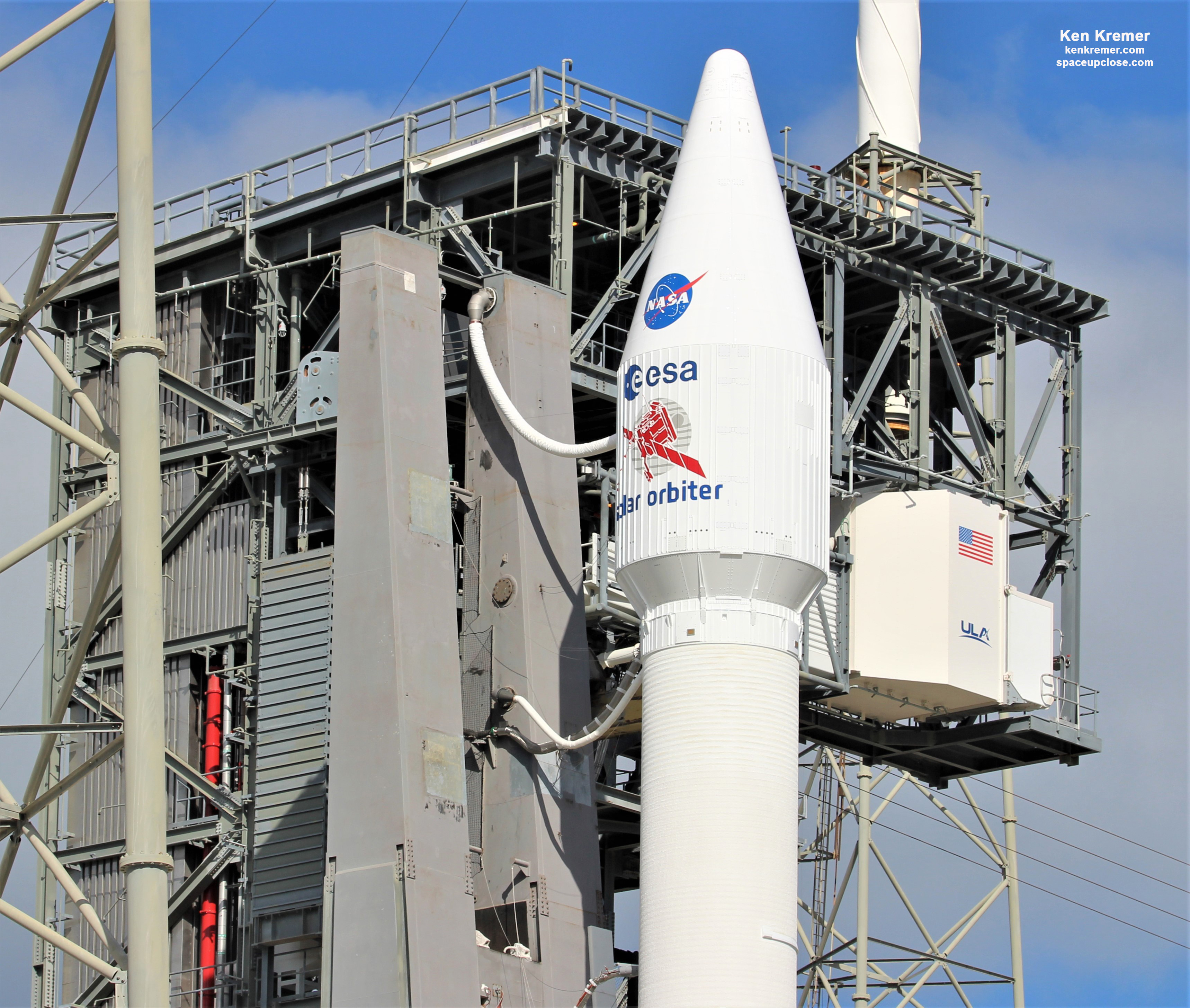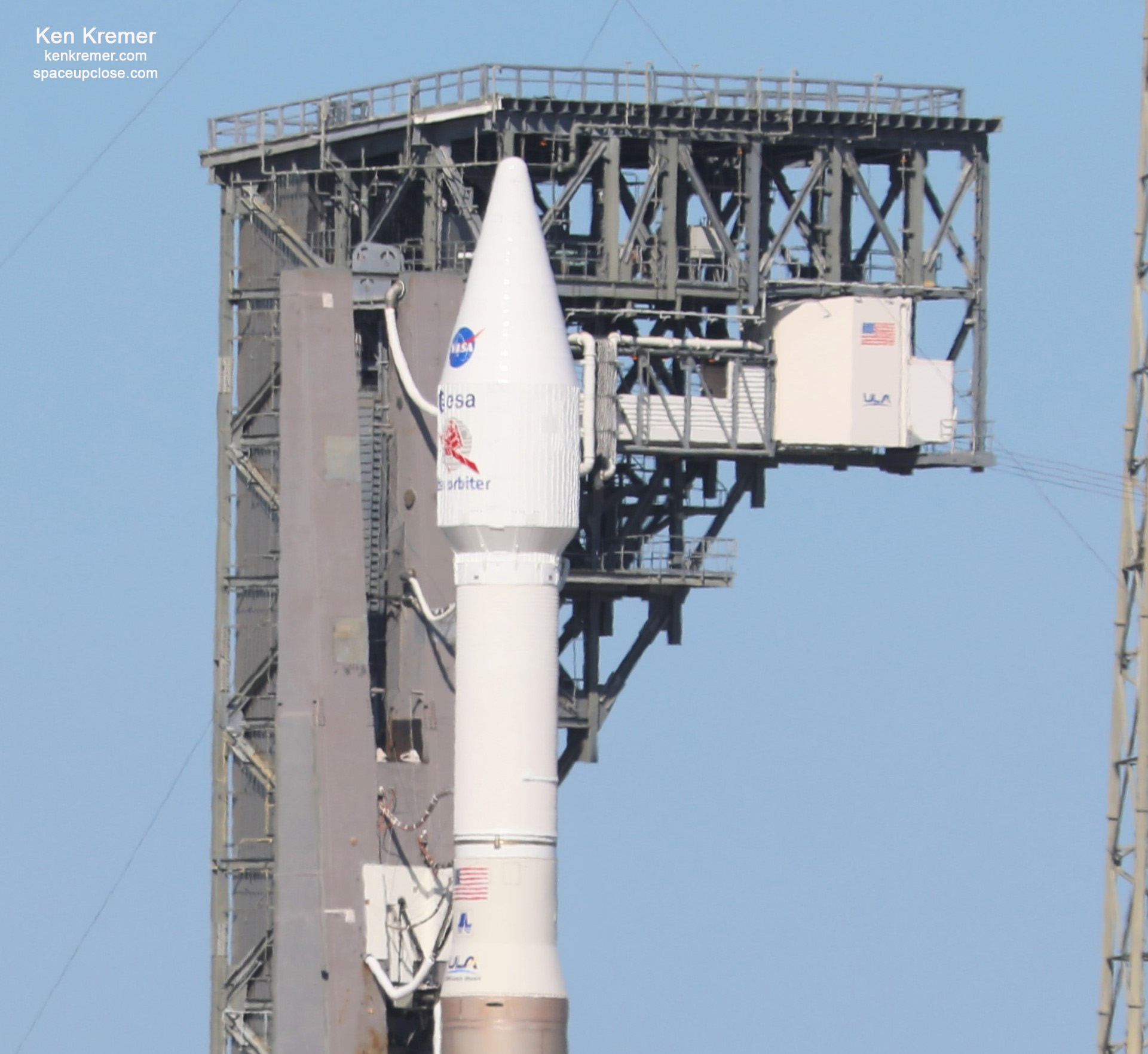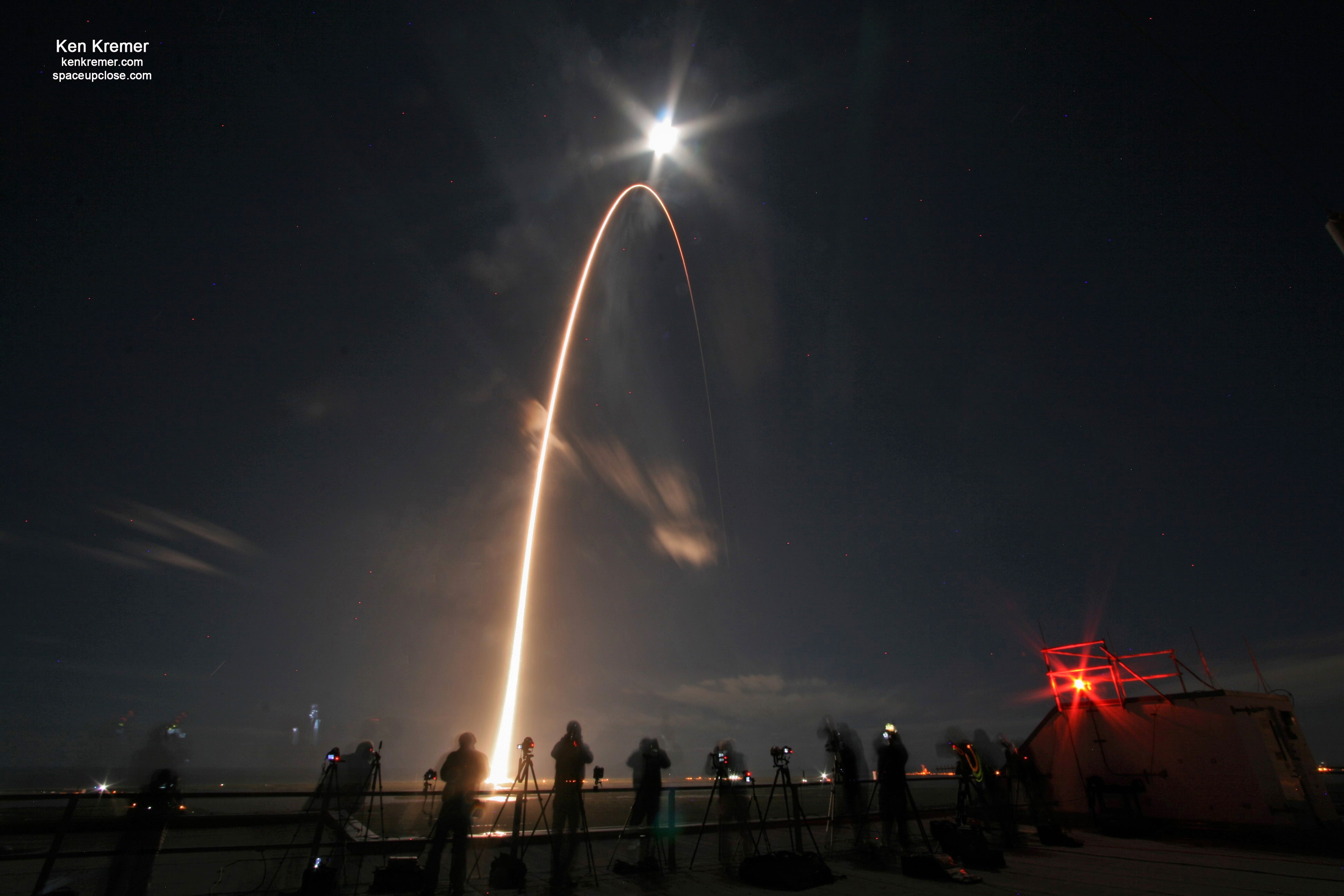 ESA/NASA Solar Orbiter mission to study the Sun streaks to space atop a United Launch Alliance Atlas V rocket from Cape Canaveral Space Force Station in Florida at 11:03 p.m. EST on Feb. 9, 2020 – in this long duration exposure taken from the roof of NASA’s iconic Vehicle Assembly Building (VAB) with photographers in the foreground. Credit: Ken Kremer/kenkremer.com/spaceupclose.com
ESA/NASA Solar Orbiter mission to study the Sun streaks to space atop a United Launch Alliance Atlas V rocket from Cape Canaveral Space Force Station in Florida at 11:03 p.m. EST on Feb. 9, 2020 – in this long duration exposure taken from the roof of NASA’s iconic Vehicle Assembly Building (VAB) with photographers in the foreground. Credit: Ken Kremer/kenkremer.com/spaceupclose.com
For SpaceUpClose.com & RocketSTEM
KENNEDY SPACE CENTER/CAPE CANAVERAL SPACE FORCE STATION, FL – The Solar Orbiter collaborative mission between ESA (European Space Agency) and NASA to study the Sun and its poles and space weather in unprecedented detail streaked to space on a commercial United Launch Alliance Atlas V rocket Sunday evening, Feb. 9 from the Florida Space Coast.
The Solar Orbiter mission started with a spectacular on time blastoff of the ULA Atlas V at 11:03 p.m. EST Sunday, Feb. 9 from Space Launch Complex 41 on Cape Canaveral Space Force Station, Florida.
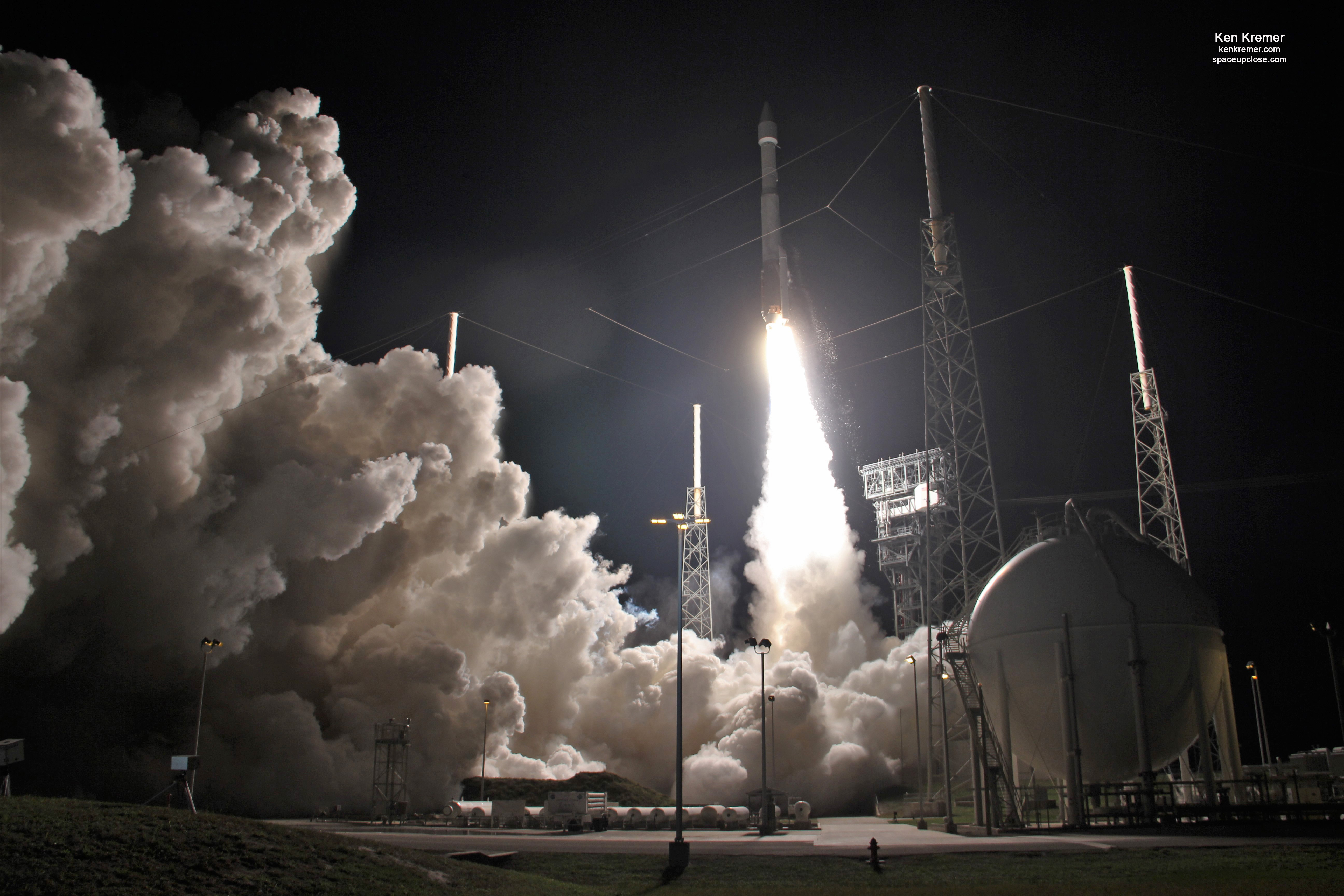
The spacecraft was confirmed to be healthy nearly an hour and a half later at 12:24 a.m. Monday, Feb 10 when mission controllers at the European Space Operations Centre (ESOC) in Darmstadt, Germany, received a signal from the spacecraft indicating that its life giving solar panels had successfully deployed.
The international Solar Orbiter is the first mission designed to image and explore the sun’s polar regions thereby offering unprecedented science returns on basic understandings of how the sun works and better predictions of Space Weather events that impact everyday life on Earth and our astronauts living in space aboard the International Space Station (ISS).
“As humans, we have always been familiar with the importance of the Sun to life on Earth, observing it and investigating how it works in detail, but we have also long known it has the potential to disrupt everyday life should we be in the firing line of a powerful solar storm,” said Günther Hasinger, ESA director of Science.
“By the end of our Solar Orbiter mission, we will know more about the hidden force responsible for the Sun’s changing behavior and its influence on our home planet than ever before.”
Enjoy our Space UpClose gallery of imagery taken from on site at the Kennedy Space Center and the VAB roof and launch pad 41 on Cape Canaveral Space Force Station, Florida
“Solar Orbiter is going to do amazing things. Combined with the other recently launched NASA missions to study the Sun, we are gaining unprecedented new knowledge about our star,” said Thomas Zurbuchen, NASA’s associate administrator for Science at the agency’s headquarters in Washington.
“Together with our European partners, we’re entering a new era of heliophysics that will transform the study of the Sun and help make astronauts safer as they travel on Artemis program missions to the Moon.”
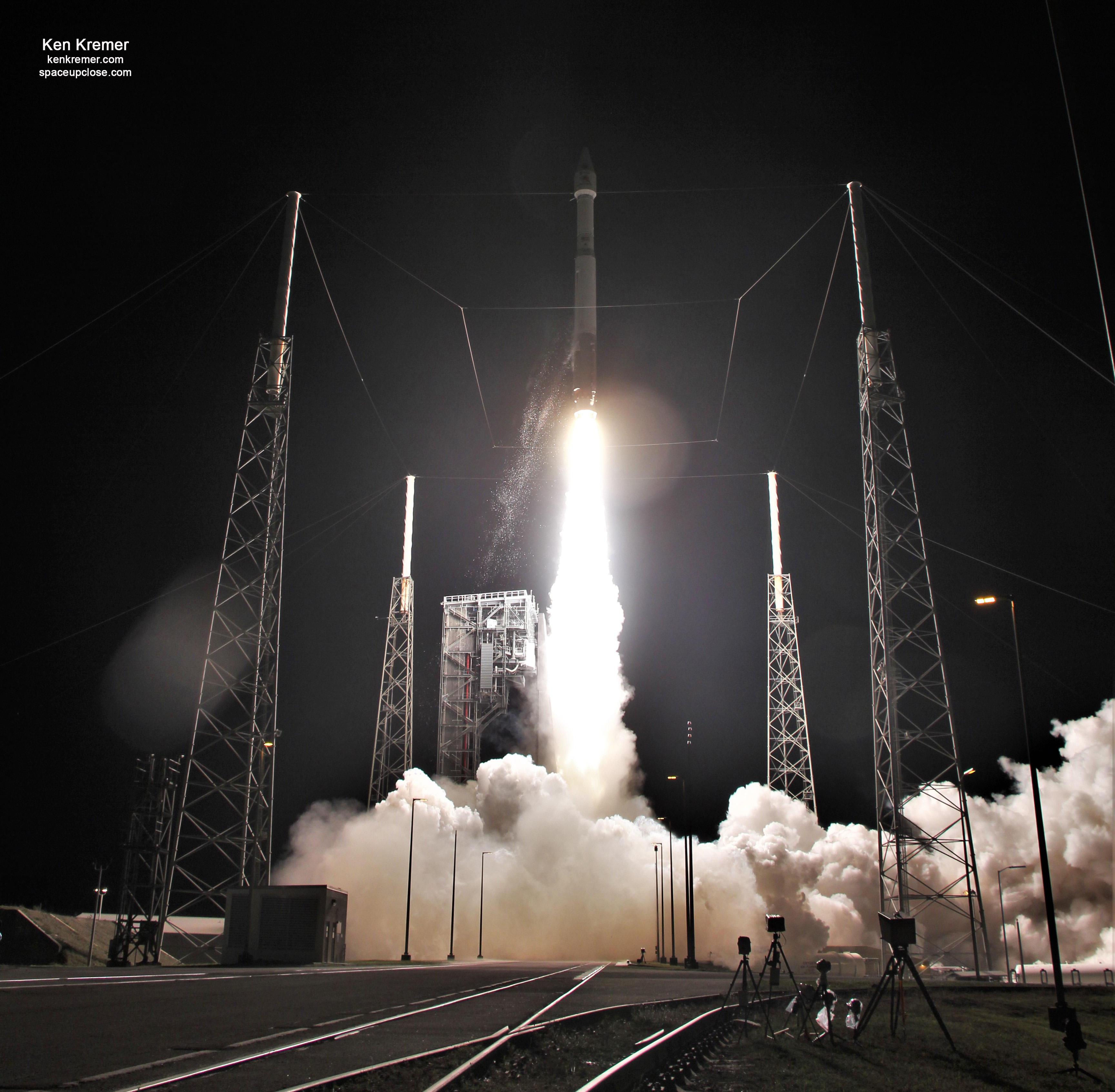
At its closest approach Solar Orbiter will face the Sun from within the orbit of Mercury, at a distance of merely approximately 26 million miles (42 million km) from the suns blistering surface.
Cutting-edge heatshield technology will ensure the spacecraft’s scientific instruments are protected as the heatshield will endure temperatures of up to 500ºC – up to 13 times the heat experienced by satellites in Earth orbit.
“After some twenty years since inception, six years of construction, and more than a year of testing, together with our industrial partners we have established new high-temperature technologies and completed the challenge of building a spacecraft that is ready to face the Sun and study it up close,” said César García Marirrodriga, ESA’s Solar Orbiter project manager.
Large crowds of excited spectators from around America and across the globe gathered along the Indian River lagoon in Titusville and along coastal beaches at Jetty Park, Cape Canaveral and Cocoa Beach to enjoy the stunning liftoff under picture perfect conditions.
From my perspective on the VAB roof at NASA’s Kennedy Space Center The Atlas V and Solar Orbiter soard aloft almost directly towards the full moon and arced over on an easterly trajectory just below the Moon’s path – making for a stunning sky show ! See my 2 streak shots herein
Solar Orbiter launched on the Atlas V in the 411 configuration with a bisector 4 meter diameter payload fairing (PLF) and 1 strap on AJ-60A solid rocket booster.
The Atlas V stands 189-feet-tall (57.6-meter).
The Atlas V first stage booster was powered by the dual nozzle RD AMROSS RD-180 engine. Aerojet Rocketdyne provided the one AJ-60A SRB and RL10A-4-2 engine for the Centaur upper stage.
The overall 1st stage engines generated approx. 1.2 million pounds of combined thrust from the liquid and solid fueled engines.
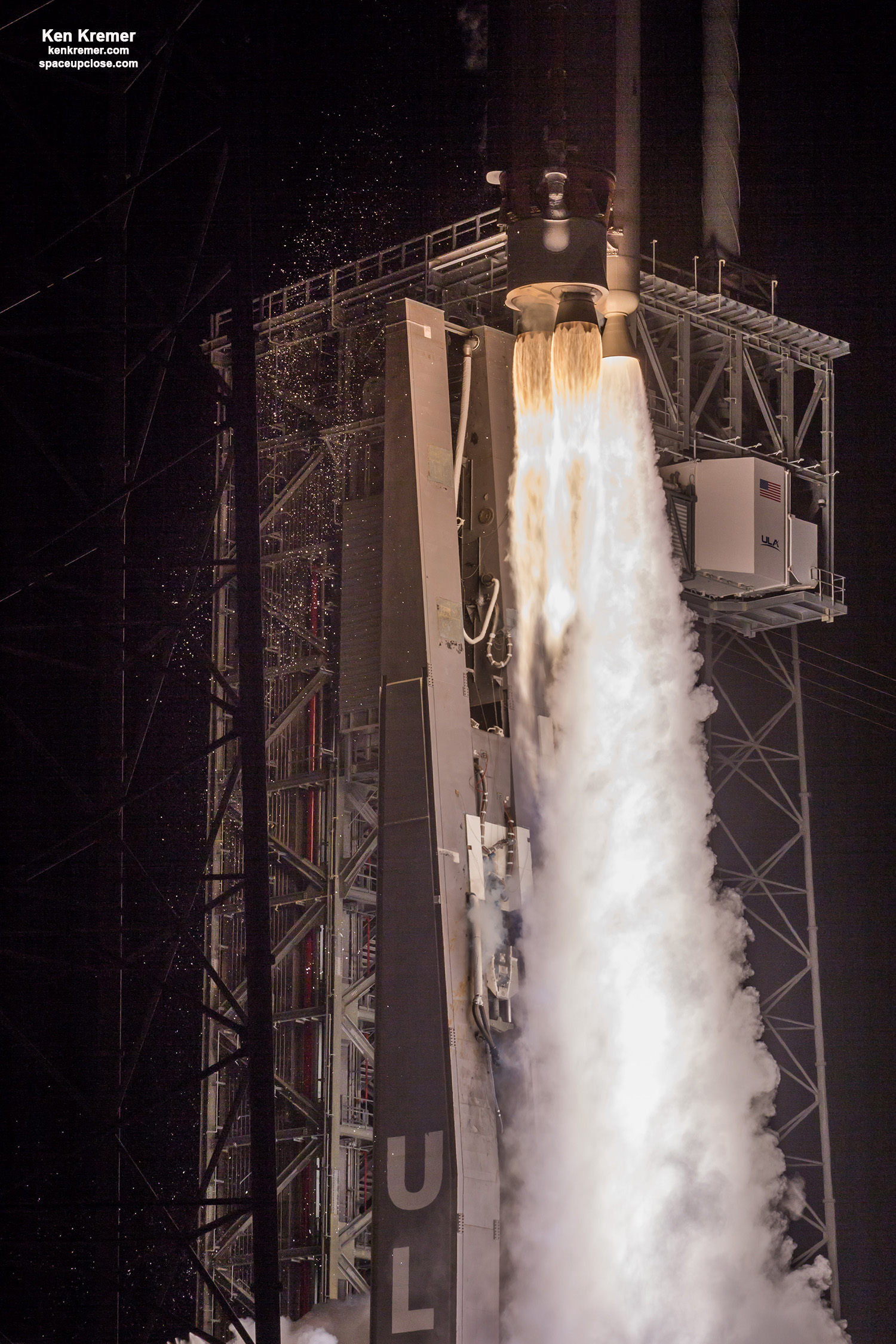
NASA’s Launch Services Program at the Kennedy Space Center in Florida selected ULA’s proven Atlas V vehicle for this mission and is responsible for management and oversight of the Atlas V launch services.
The 1750 kg Solar Orbiter spacecraft was encapsulated in the 4 meter payload fairing that protected the spacecraft until it passed through the discernable atmosphere and was then jettisoned at 4 minutes and 27 seconds after liftoff.
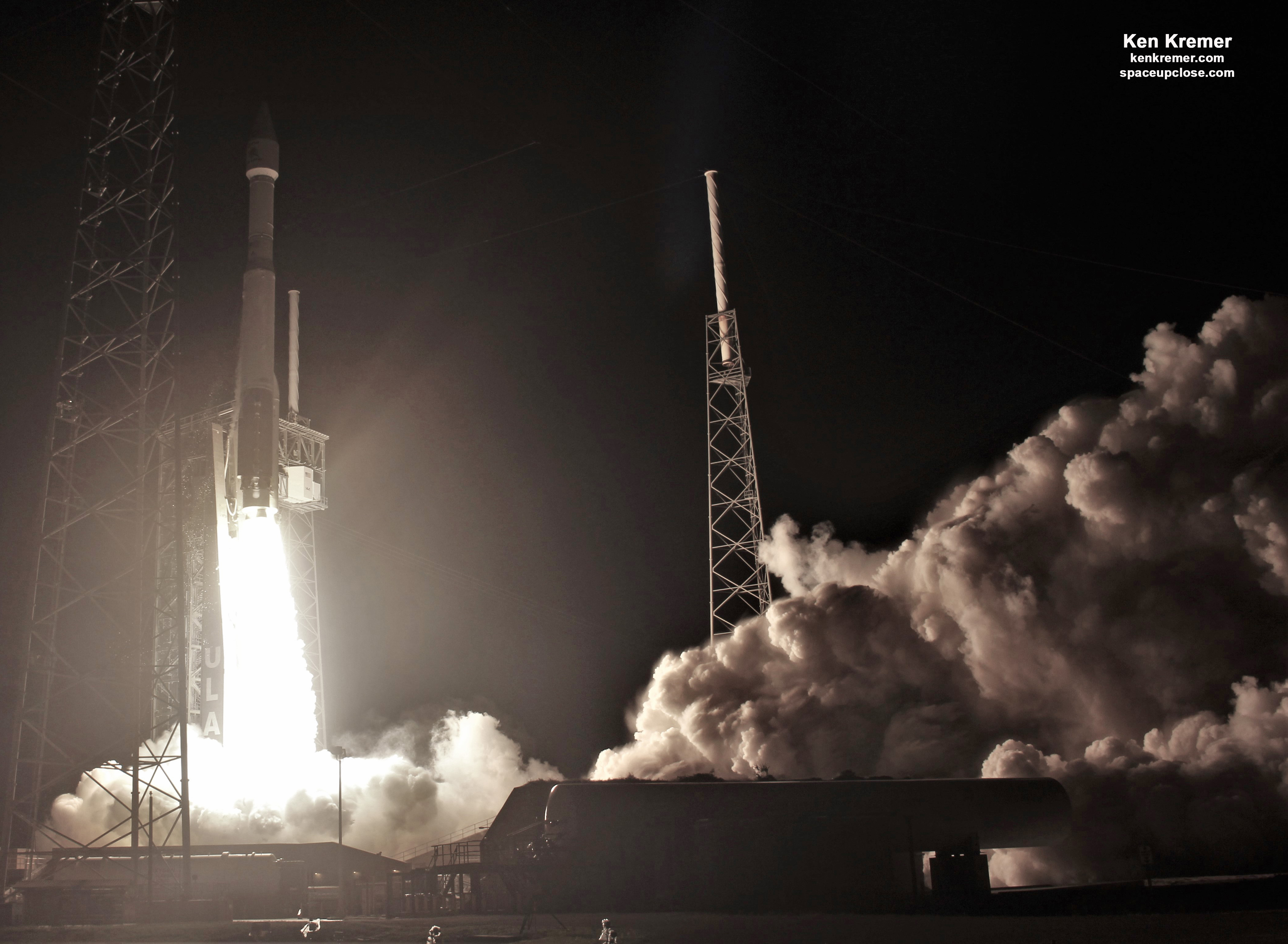
Solar Orbiter carries 10 state of the art science instruments – 9 from ESA and 1 from NASA.
The next steps over the next two days are for Solar Orbiter to deploy its instrument boom and several antennas that will communicate with Earth and gather scientific data.
Solar Orbiter is an international collaborative mission between the European Space Agency (ESA) and NASA.
“The spacecraft will observe the Sun with high spatial resolution telescopes and capture observations in the environment directly surrounding the spacecraft to create a one-of-a-kind picture of how the Sun can affect the space environment throughout the solar system. The spacecraft also will provide the first-ever images of the Sun’s poles and the never-before-observed magnetic environment there, which helps drive the Sun’s 11-year solar cycle and its periodic outpouring of solar storms.”
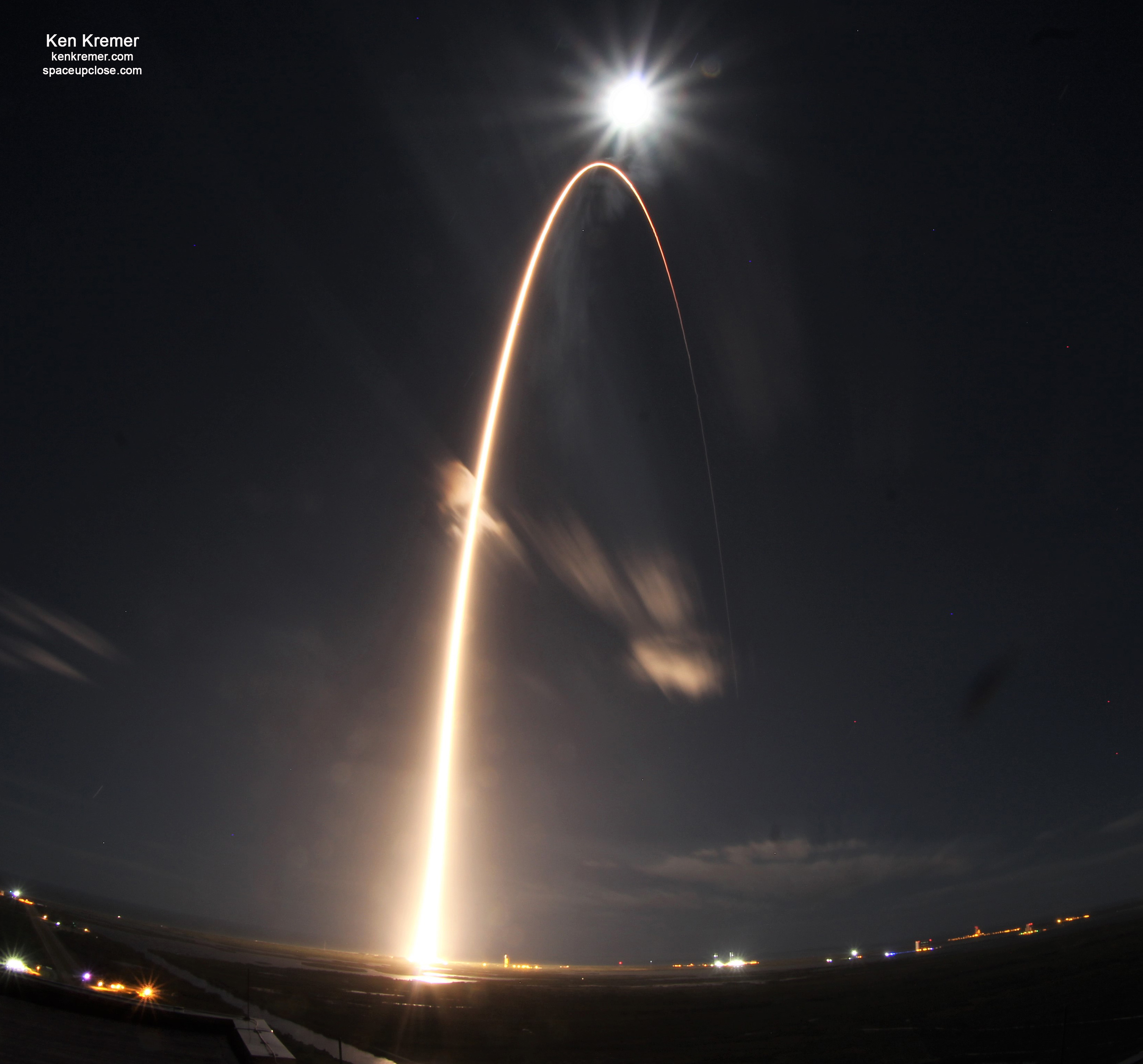
From NASA:
Solar Orbiter is on a unique trajectory that will allow its comprehensive set of instruments to provide humanity with the first-ever images of the Sun’s poles. This trajectory includes 22 close approaches to the Sun, bringing the spacecraft within the orbit of Mercury to study the Sun and its influence on space.
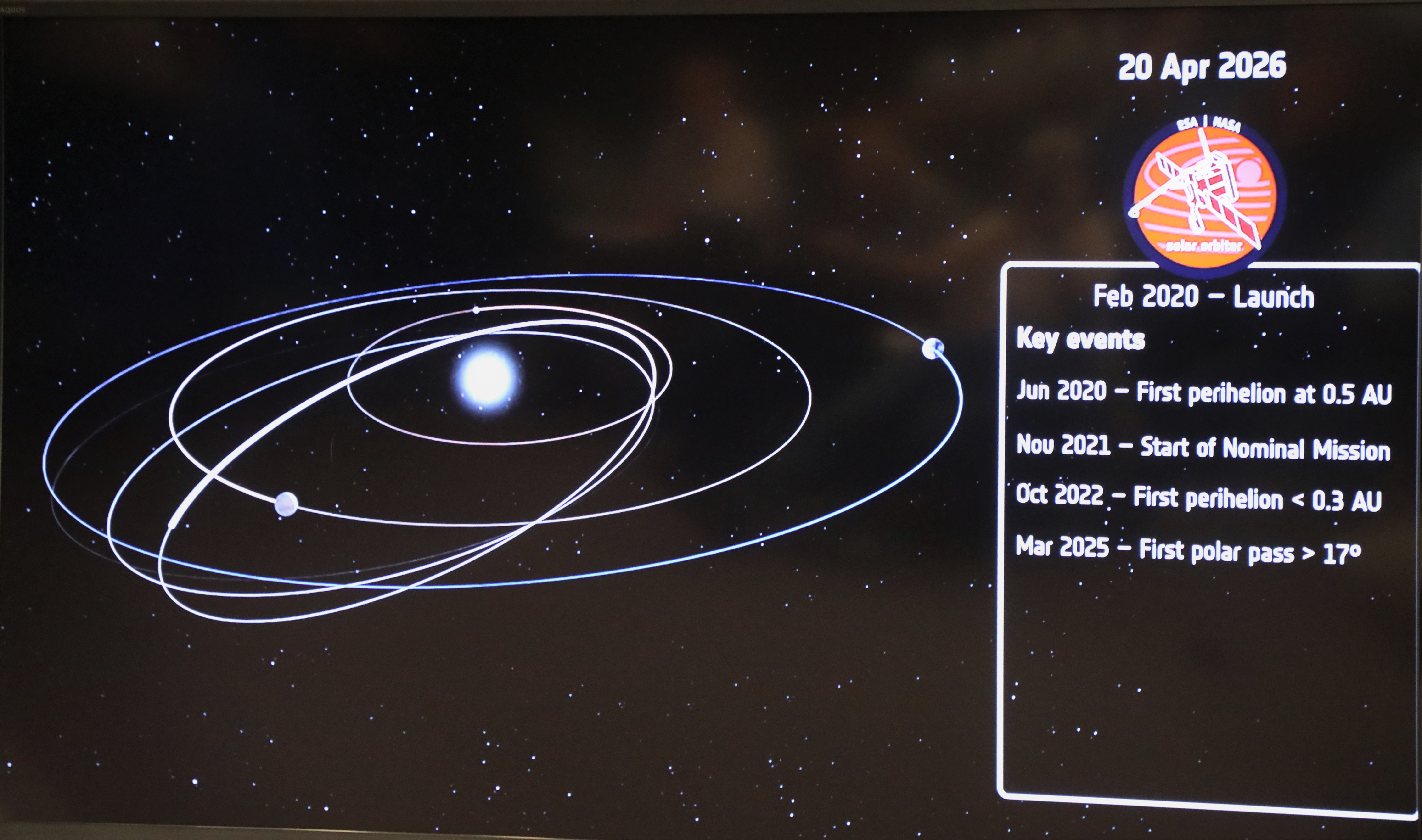
Solar Orbiter will spend about three months in its commissioning phase, during which the mission team will run checks on the spacecraft’s 10 scientific instruments to ensure they are working properly. It will take Solar Orbiter about two years to reach its primary science orbit.
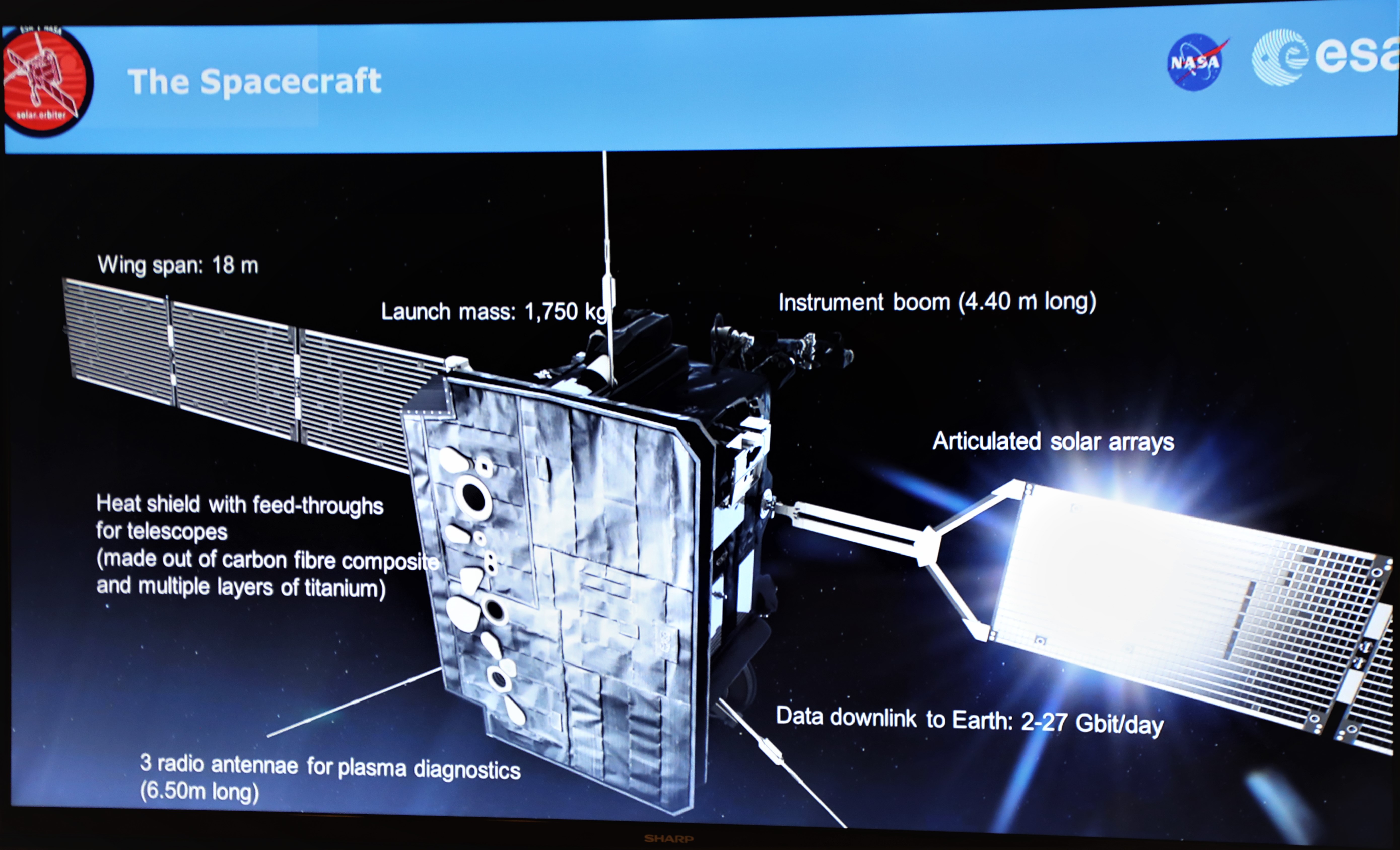
Solar Orbiter combines two main modes of study. In-situ instruments will measure the environment around the spacecraft, detecting such things as electric and magnetic fields and passing particles and waves. The remote-sensing instruments will image the Sun from afar, along with its atmosphere and its outflow of material, collecting data that will help scientists understand the Sun’s inner workings.
During the mission’s cruise phase, which lasts until November 2021, the spacecraft’s in-situ instruments will gather scientific data about the environment around the spacecraft, while the remote-sensing telescopes will focus on calibration to prepare for science operations near the Sun. The cruise phase includes three gravity assists that Solar Orbiter will use to draw its orbit closer to the Sun: two past Venus in December 2020 and August 2021, and one past Earth in November 2021.
Following its Earth gravity assist, Solar Orbiter will begin the primary phase of its mission – leading up to its first close pass by the Sun in 2022 – at about a third the distance from the Sun to Earth. Throughout its mission, Solar Orbiter will use successive Venus gravity assists to draw its orbit closer to the Sun and lift it out of the ecliptic plane.
Solar Orbiter’s unique orbit will bring the spacecraft out of the plane that roughly aligns with the Sun’s equator where Earth and the other planets orbit. Spacecraft launched from Earth naturally stay in this plane, which means that telescopes on Earth and telescopes on satellites have limited views of the Sun’s north and south poles.
A previous ESA-NASA mission, Ulysses, launched in 1990, achieved an inclined orbit giving scientists their first measurements of the space around the Sun in this critical region. Unlike Ulysses, Solar Orbiter carries cameras that will provide the first-ever images of the Sun’s poles. This vital information will help scientists fill in the gaps in models of the Sun’s magnetic field, which drives the Sun’s activity.
ESA’s European Space Research and Technology Centre in the Netherlands manages the development effort. The European Space Operations Center in Germany will operate Solar Orbiter after launch. Solar Orbiter was built by Airbus Defense and Space. The spacecraft contains 10 instruments. Nine were provided by ESA member states and ESA. NASA provided one instrument, the Solar Orbiter Heliospheric Imager (SoloHI), and an additional sensor, the Heavy Ion Sensor, which is part of the Solar Wind Analyzer instrument suite.
Solar Orbiter complements a fleet of NASA Heliophysics spacecraft observing the star we live with and its effects on the space we travel through.
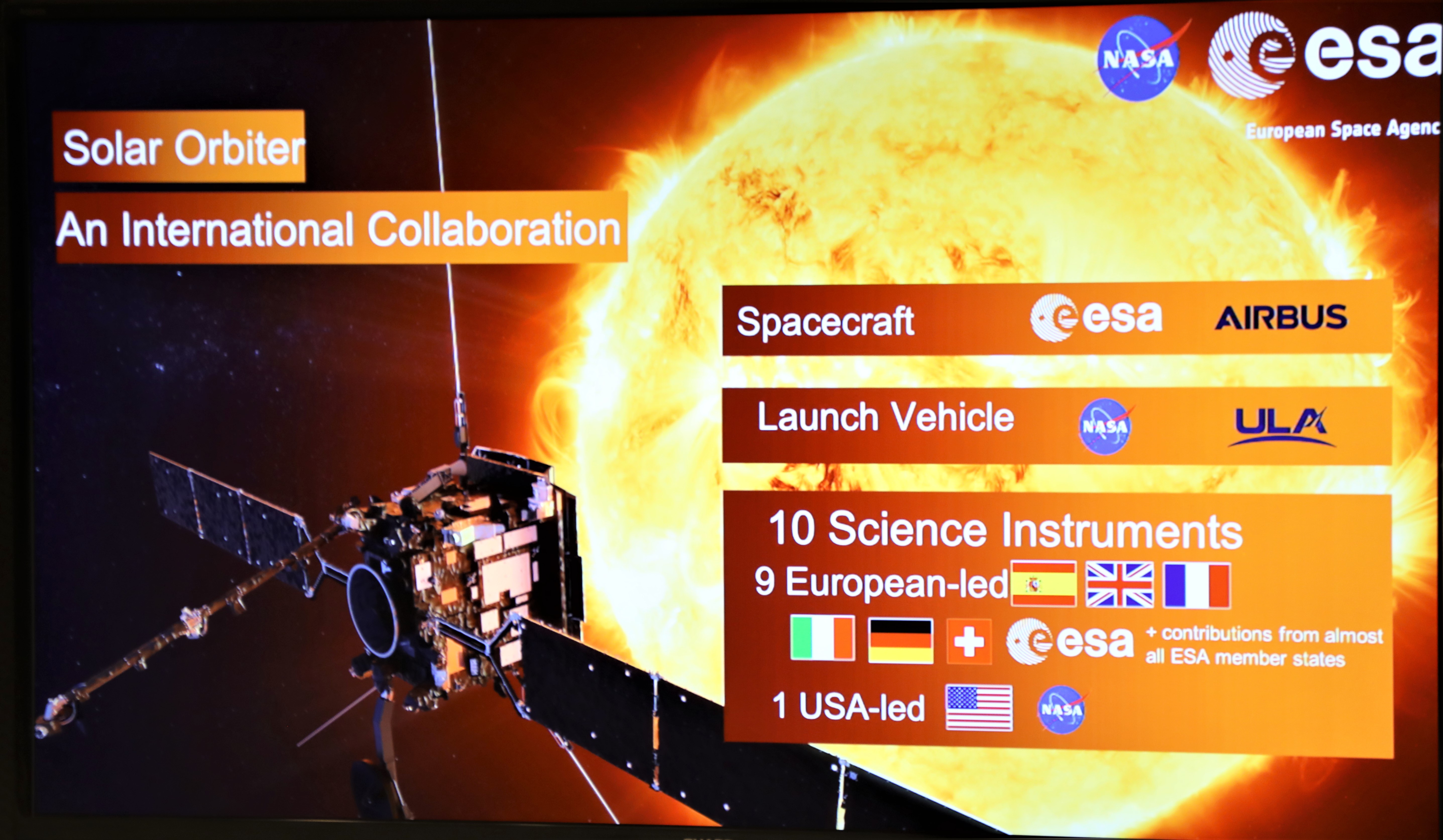
……..
This launch marked the 82nd successful liftoff on an Atlas V rocket and 137th overall for ULA.
The NASA/ESA Solar Orbiter spacecraft rolled out to the launch pad atop a United Launch Alliance Atlas V rocket at Space Launch Complex 41 at Cape Canaveral Space Force Station on Saturday morning, February 8 under sunny blue skies on the Florida Space Coast.
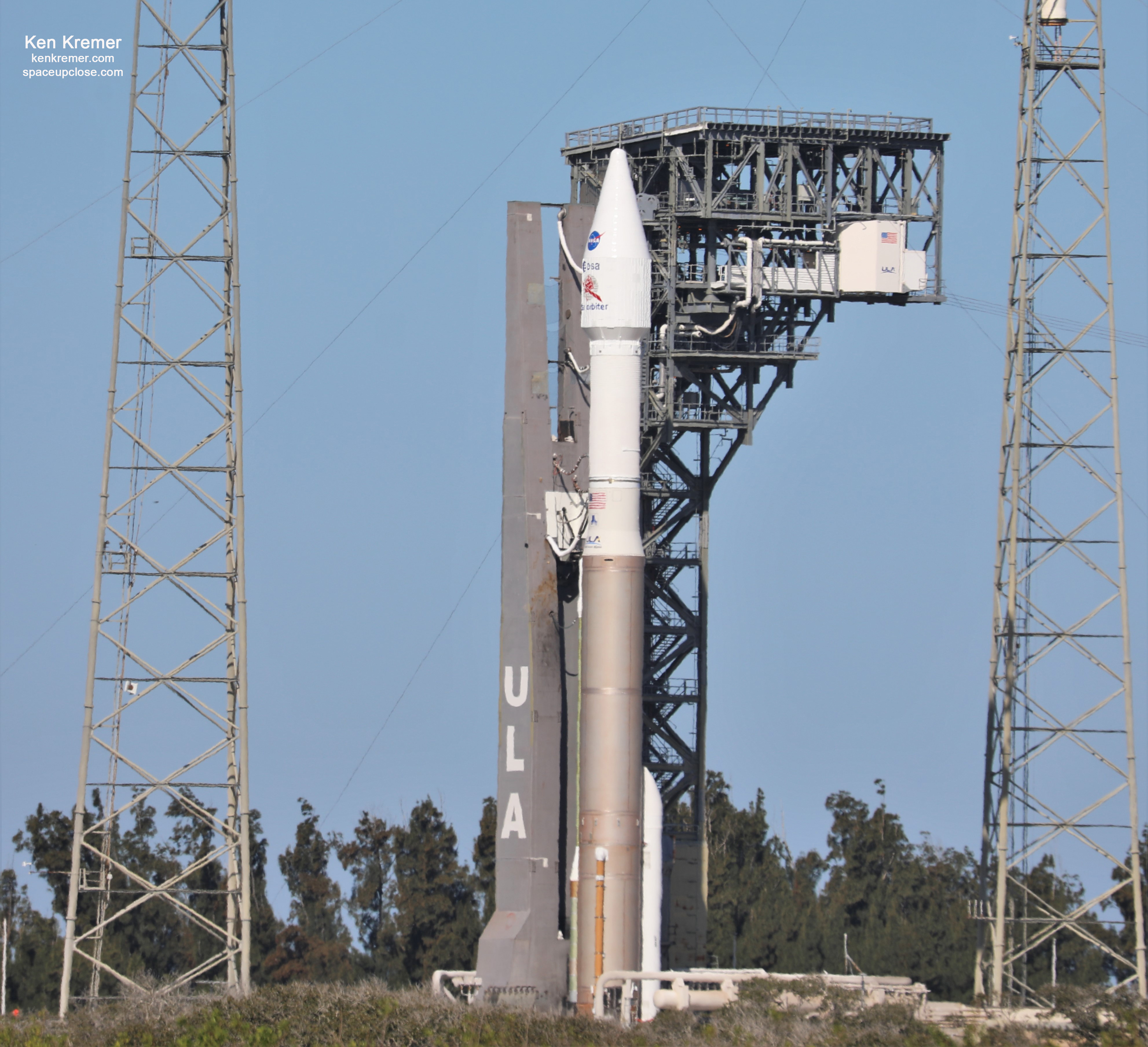
Check out our Space UpClose gallery of photos of the rollout sequence as witnessed from nearby pad 41 at our media viewing location.
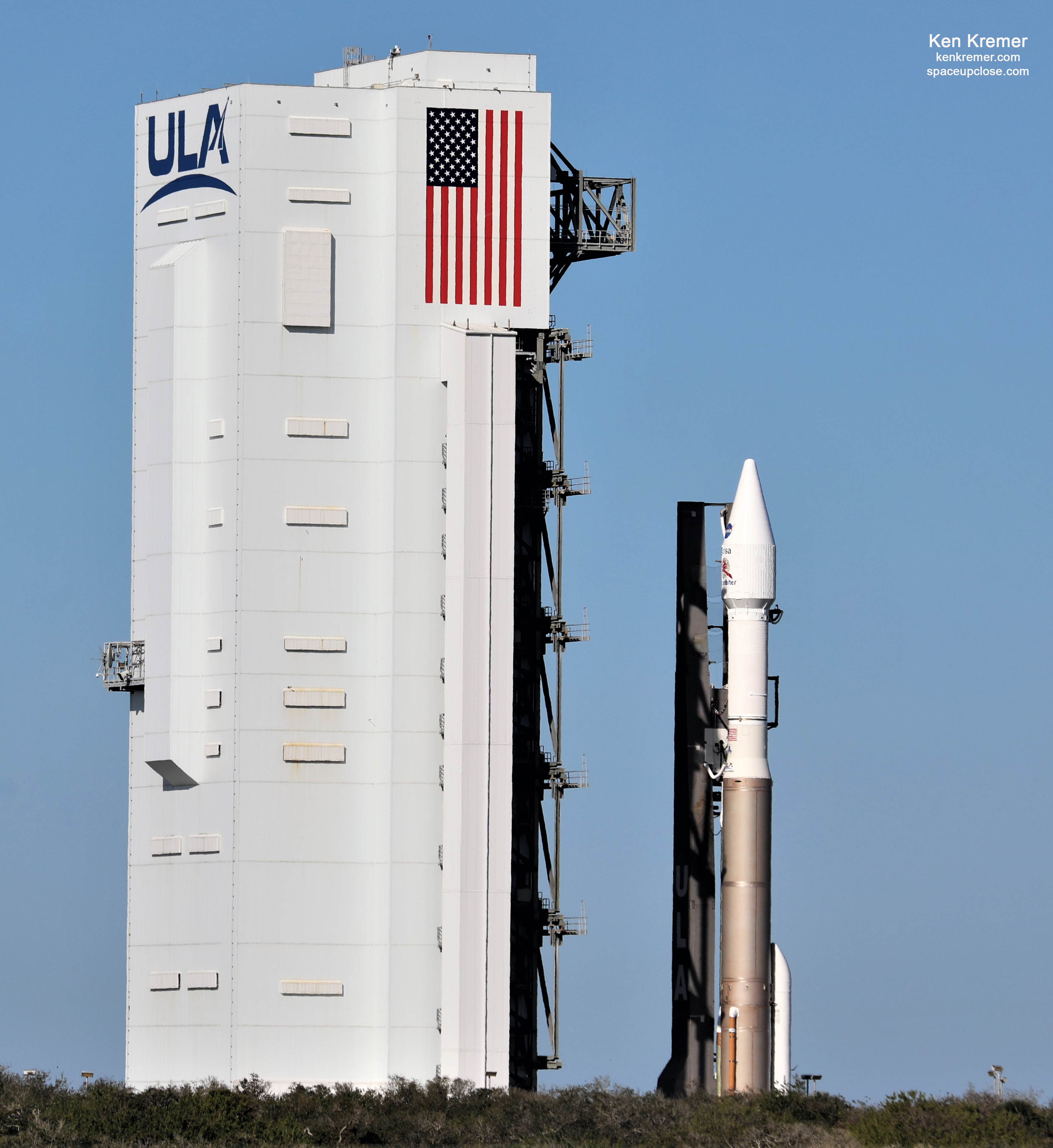
My rollout photos were featured on WFTV Channel 9 ABC TV News Orlando and WKMG Channel 6 CBS TV News Orlando on Feb 8:
Solar Orbiter is an ESA mission with strong NASA participation. The prime contractor is Airbus Defence and Space in Stevenage, UK. The mission will provide complementary datasets to NASA’s Parker Solar Probe that will allow more science to be distilled from the two missions than either could achieve on their own, says ESA.
My interview commentary about Solar Orbiter was featured on WFTV Channel 9 ABC TV News Orlando on Feb 3 & 4:
https://www.wftv.com/news/local/brevard-county/nasa-esa-send-spacecraft-study-sun-help-defend-earth-dangerous-solar-storms/EZHRVRLFAVAZROGISITJTYEGSY/
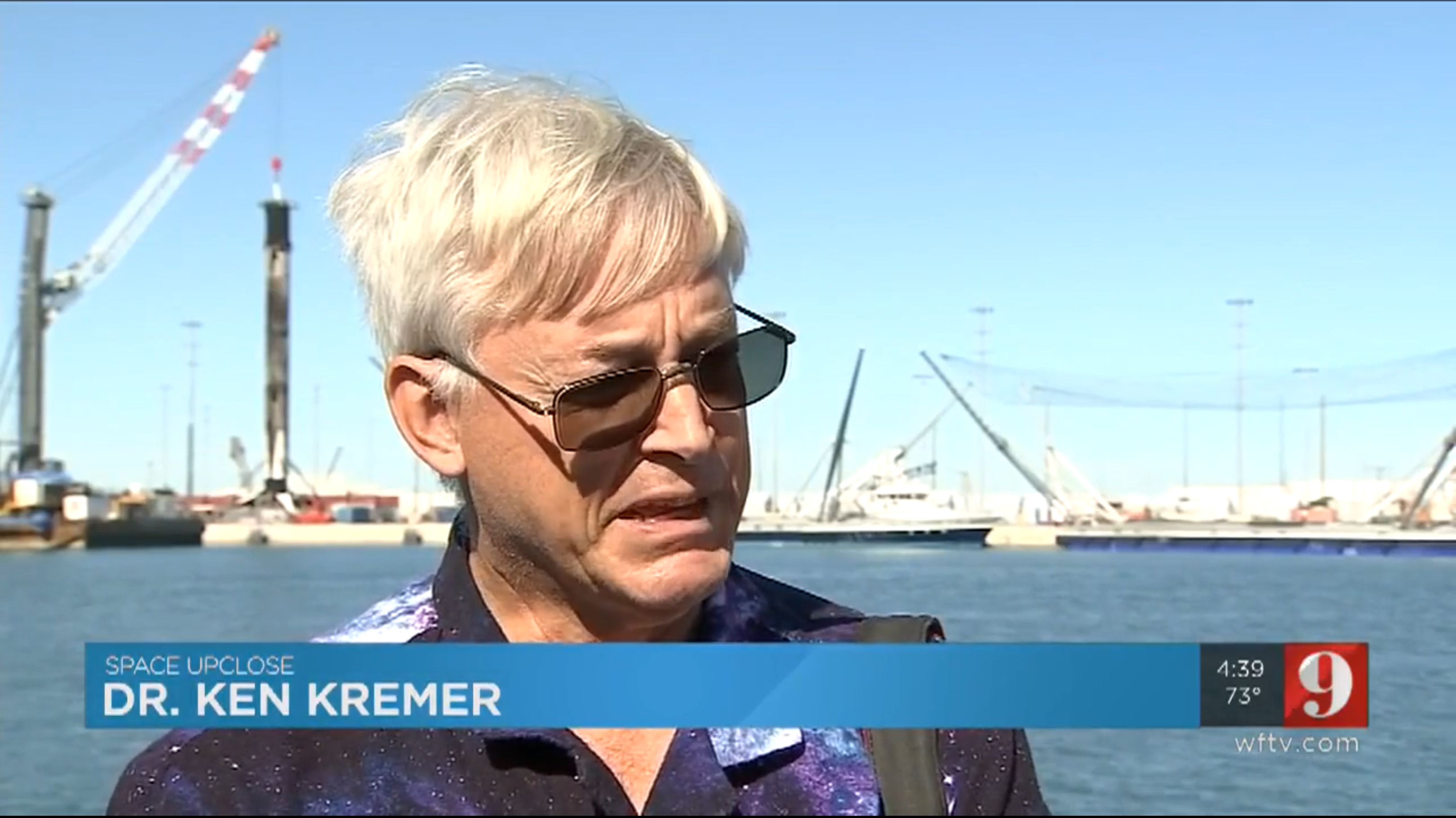
My rollout photos were featured on WFTV Channel 9 ABC TV News Orlando and WKMG Channel 6 CBS TV News Orlando on Feb 8:
Watch for Ken’s continuing reports on Solar Orbiter!
Watch Ken’s continuing reports onsite for live reporting of upcoming ULA and SpaceX launches including Solar Orbiter, In-Flight Abort and Starlink and in Jan/Feb 2020 at the Kennedy Space Center and Cape Canaveral Air Force Station.
Stay tuned here for Ken’s continuing Earth and Planetary science and human spaceflight news: www.kenkremer.com –www.spaceupclose.com – twitter @ken_kremer – email: ken at kenkremer.com
Dr. Kremer is a research scientist and journalist based in the KSC area, active in outreach and interviewed regularly on TV and radio about space topics.
………….
Ken’s photos are for sale and he is available for lectures and outreach events

